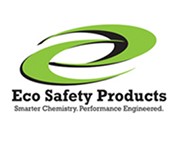How Do Paintings and Coatings Impact Health and the Environment?
It’s a fact of life that coatings are everywhere — on cars, exterior/interior walls, machines, roofing, toys, cafeteria floors, furniture.

We encounter an immeasurable amount of coatings (and their chemicals) every day. The coatings industry is one of the most heavily regulated industries in the world — and for good reason. But do regulatory practices necessarily translate into safer and more efficient products?
Volatile Organic Compound (VOC) emissions is one of the most hazardous health and environmental dangers in the painting and coating industry. VOCs are poisonous and high VOCs levels are linked to: headaches, respiratory disease, loss of coordination, a weakened immune system, worsening of asthma symptoms, cancer, and kidney damage.
Sustainability Coating the Unsung Heath and Environmental Hero
 Fortunately, some paints and coatings professionals have not only identified potential industry dangers, but have dedicated decades to answering the call.
Fortunately, some paints and coatings professionals have not only identified potential industry dangers, but have dedicated decades to answering the call.
Product manufacturers and suppliers first challenged themselves to create safer and high-performing low-VOC alternatives — which they have accomplished and have made these innovative products the norm.
“45% of Millennials say they could be swayed to purchase products from eco-conscious companies.”
Today, sustainability coatings are in-demand and highly successful products. The industry trends toward water-based coatings, powder coatings, high-solid ultraviolet (UV) cure coatings, and lower-emitting coating products—all of which lead to CLEANER and GREENER solutions!
Eco Safety Products
“We care about what’s in the air!”– and the proof in their products: No Toxins. No Hazards. No Solvent Odors.
EcoProCote
Eco Safety Products was the brainchild of John Bennett in 2004, but his experience in the field dates to the 1980s. Having learned of the rising interest in water-based chemicals in Asia, where hazardous waste disposal costs and critical health ailments were on the rise. At the time, there was a growing awareness movement against lead paint and lower VOCs, so it was an ideal time to introduce eco-friendly products.
Petrochemicals (used in paints) and the additives required in higher performing water-based coatings, were among the dangerous culprits. In fact, most of the coatings had some form of toxins or carcinogenic additives. Fortunately, John discovered natural, plant-based oils could be used to replicate petroleum. Soy, for example, has one of the highest solvency ratings, leading to its use in paint strippers.

Now, with COVID, John grew even more concerned, as people were around coatings around the clock, making toxic ingredients more troublesome. Imagine being stuck inside a building with toxic chemicals on the wall, floor, furniture, etc, especially if there isn’t an advanced filtration system.
The term, “eco-friendly,” gets thrown around quite a bit, but what does it really mean? How does it really apply? To what extent does a product really need to be environmentally-friendly to make the claim?
John understood all of these points, which caused him to skip the hype, and get down to the real chemistry. By using plant-based materials to replicate petrochemicals sans the toxins–not just avoid the VOCs. He goes further, looking at the performance of his eco-friendly products, knowing that green products that aren’t highly effective won’t hold water.

How has Eco Safety Products Changed the Painting and Coatings Industry?
Eco Safety Products takes things to the next level, because they don’t just offer water-based products without the toxins, but the ingredients use renewable materials throughout the line (from the preparation of a surface to post-maintenance–floor to ceiling).
“We became that single source, for being a non-toxic brand that uses renewably sourced ingredients, that’s not only reducing the toxins. But now, it’s become more of a social and economic awareness, as the reduction of carbon emissions.”
–John Bennett
Often green products are more expensive than their toxic counterparts, but Eco Safety Products wins on this front, as well. They’ve managed to price their products at either the same cost or even lower once you factor in the true costs of the application (and the lifespan of their coatings is significantly higher).
Check out Eco Safety Products to remain one step ahead in sustainable building practices.


